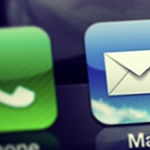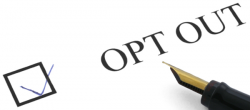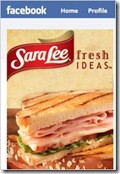 There may be some debate over whether or not email is dead, but take one look at your email inbox each morning, and I bet you’ll beg to differ.
There may be some debate over whether or not email is dead, but take one look at your email inbox each morning, and I bet you’ll beg to differ.
As Peter Bregman reported in his recent Harvard Business Review blog, this affair with email is starting to really affect us in negative ways. According to an article he cited from USA Today, the number of lawsuits filed by employees claiming unfair overtime is up 32 percent since 2008. What’s to blame, in large part, for this increase? Email. And when you factor in devices such as smartphones, which we have with us – and neurotically check – at all times, there’s no denying that it’s quietly infiltrated our personal lives.
His advice for coping? Assign designated times to “bulk-process” emails and set designated non-email times, resisting the urge to constantly check email during these off-email hours.
Now, before we all balk and say that this is completely unrealistic, especially in a service industry such as PR where we’re expected to be on top of breaking news and at the beck and call of clients ‘round the clock – I believe that his is an argument worth hearing. We have to remember that the ability to be available and respond swiftly to inquiries is only one facet of the value that we’re able to provide as PR professionals. Public relations is more than managing the flow of information between an organization and its publics; our focus on building important relationships and relaying vital information back to an organization for analysis and action can have real, measurable impact on the achievement of strategic organizational goals. And this often takes time, focus and uninterrupted thinking.
Consider this, for example: Research in the UK revealed that employees working on a computer typically switched applications to view their emails as many as 30 or 40 times an hour, for anything from a few seconds to a minute. Dr. Karen Renaud, who carried out the study, said quite simply that email has gotten out of hand:
“Email harries you,” she said in an article in the UK’s Daily Mail. “You want to know what’s in there, especially if it’s from a family member or friends, or your boss, so you break off what you are doing to read the email. The problem is that when you go back to what you were doing, you’ve lost your chain of thought and, of course, you are less productive. People’s brains get tired from breaking off from something every few minutes to check emails. The more distracted you are by distractions, including email, then you are going to be more tired and less productive.”
This brings us back to Bregman’s point. He’s not suggesting that we throw the baby out with the bath water and abandon all established email etiquette when it comes to keeping up with the daily workflow. Rather, he’s proposing that we merely try to be more mindful about it. For example, when you set up designated intervals to handle emails, you’ll be working for that express purpose, effectively making you more focused and efficient on the task at hand. We have our heads down during these email-only times, and waste less time transitioning from one activity to another in a blur of information.
The hardest part is resisting the urge to check…and check…and check…which has likely become more of a reflex than a deliberate action. So until you can resist temptation and set up some real boundaries between you, your inbox and your daily to-do list, here are a few ideas to help make the detachment process a little less painful:
1. Stop it at the source. Whenever possible, try to reduce the amount of junk email that enters your inbox on a daily basis. Set up a spam filter, unsubscribe from unnecessary email newsletters and turn off automatic notifications.
2. Realize that hoarding won’t help you. Many of us like to let emails linger in our inbox, keeping them in digital limbo until we decide exactly what do to with them. It’s a matter of personal preference, but if you find that this system just isn’t working for you, try a more aggressive approach with filing and deleting.
3. Think before you hit send. And unless it requires a direct response, don’t do it. Tim Ferris spoke with blogger Robert Scoble about how he stays on top of tens of thousands of emails, revealing that “replying to more people more often — the goal of most people — actually creates more work instead of cutting it down.”
What are your favorite tips for cutting down on email chaos? Please share with us in the comments below!


 Knowing how to convey tone in your online writing – including blogs, Tweets, Facebook posts, pins, etc. – is to know your business inside and out.
Knowing how to convey tone in your online writing – including blogs, Tweets, Facebook posts, pins, etc. – is to know your business inside and out.  A recent survey of more than 1,000 mobile device users found that for the first time ever, email is the primary reason people are using smartphones. What’s more, emails from brands are second only to personal recommendations when it comes to influencing purchasing decisions on mobile devices. What does that mean for marketers? Michael Truby at
A recent survey of more than 1,000 mobile device users found that for the first time ever, email is the primary reason people are using smartphones. What’s more, emails from brands are second only to personal recommendations when it comes to influencing purchasing decisions on mobile devices. What does that mean for marketers? Michael Truby at  There may be some debate over whether or not
There may be some debate over whether or not 
